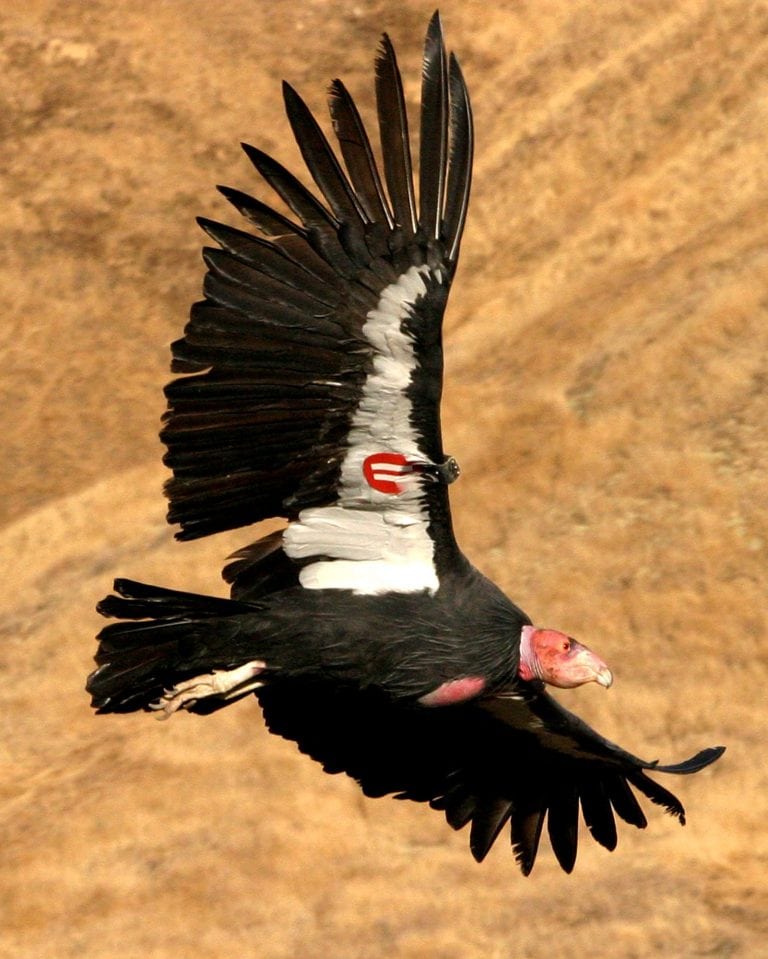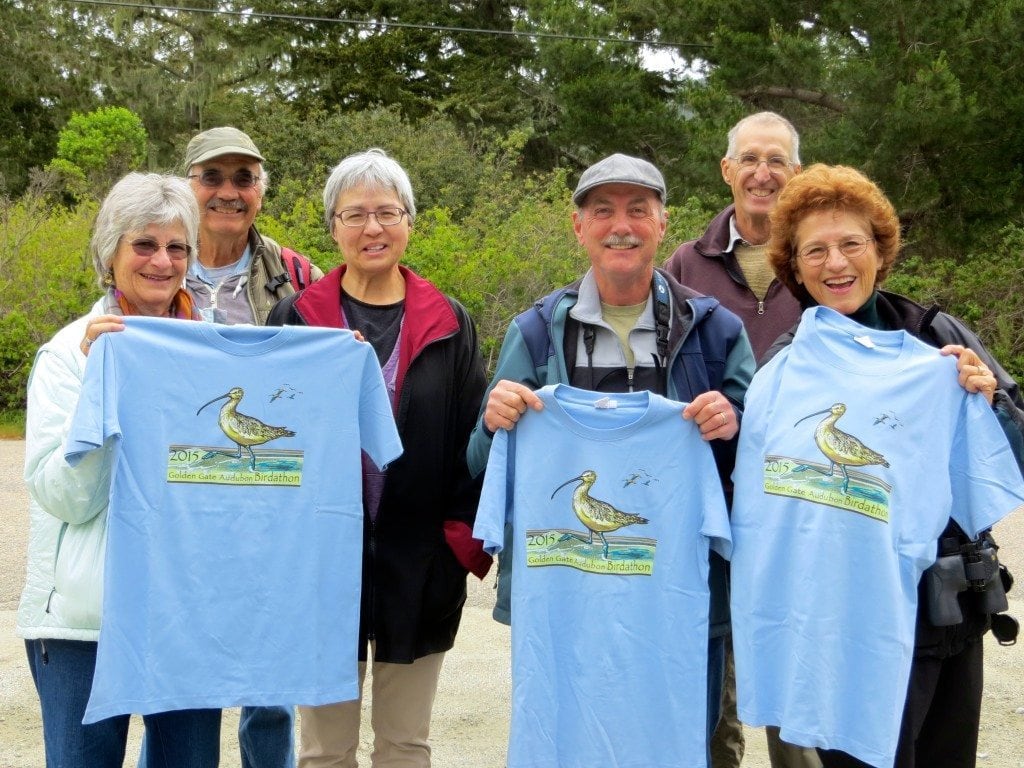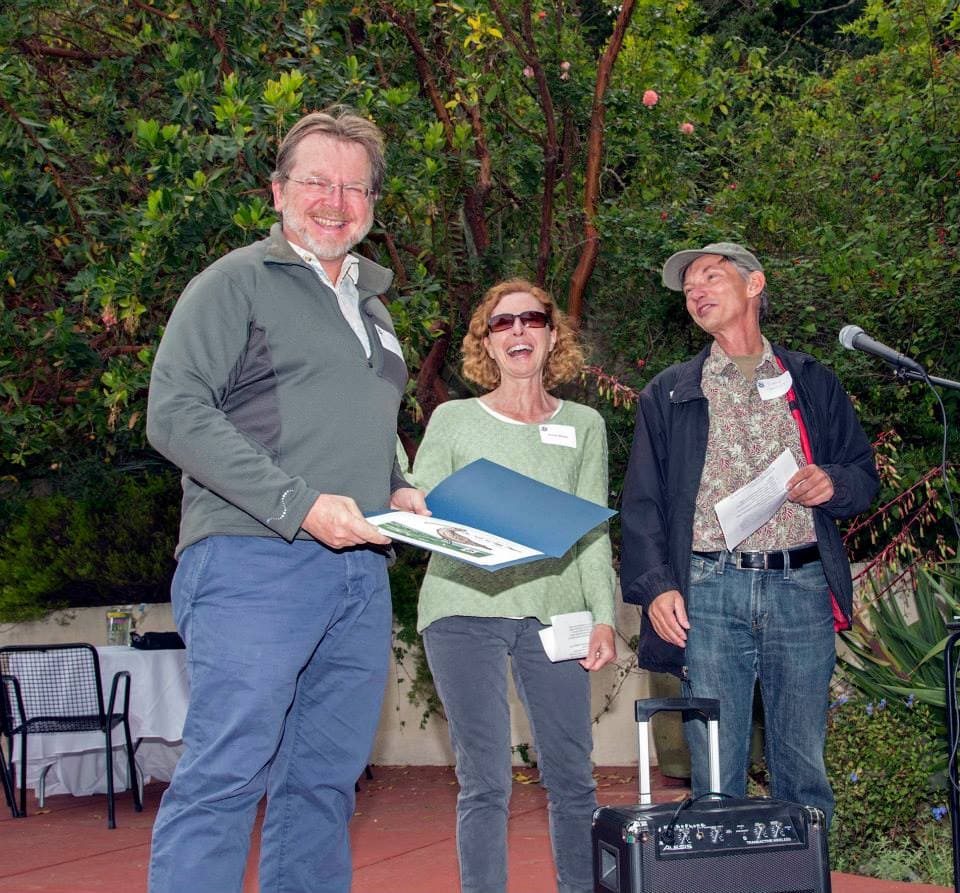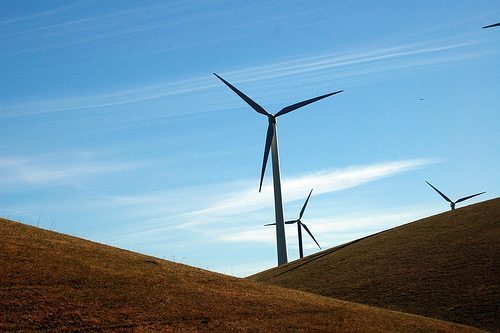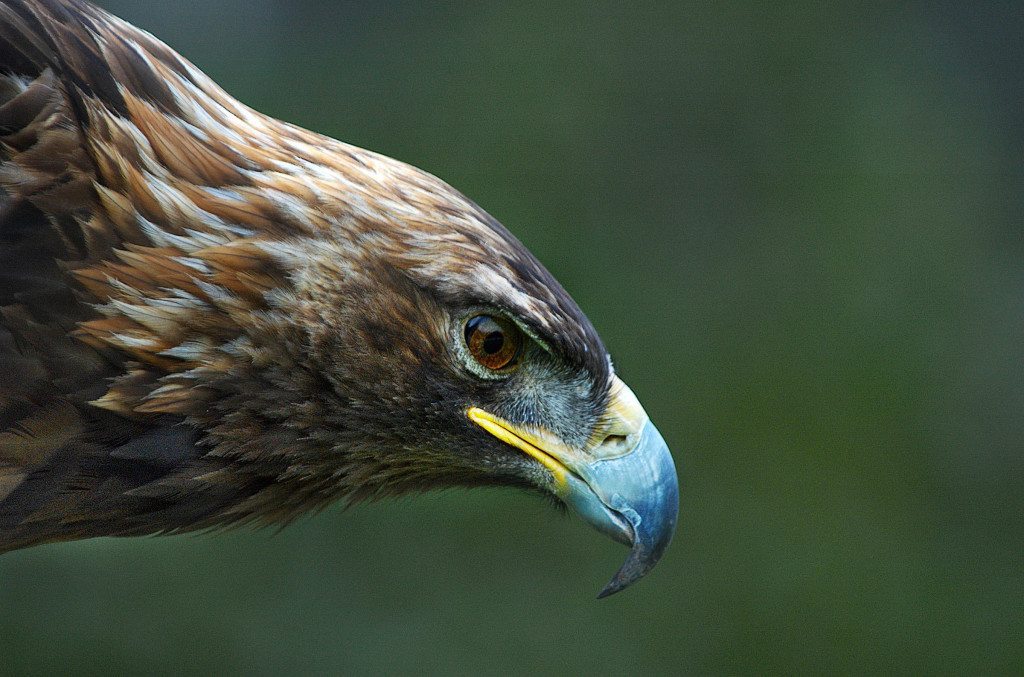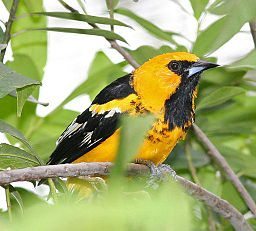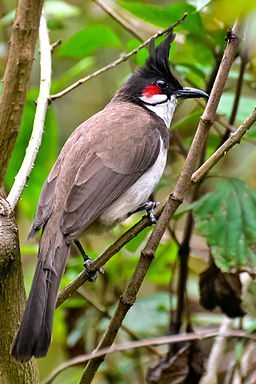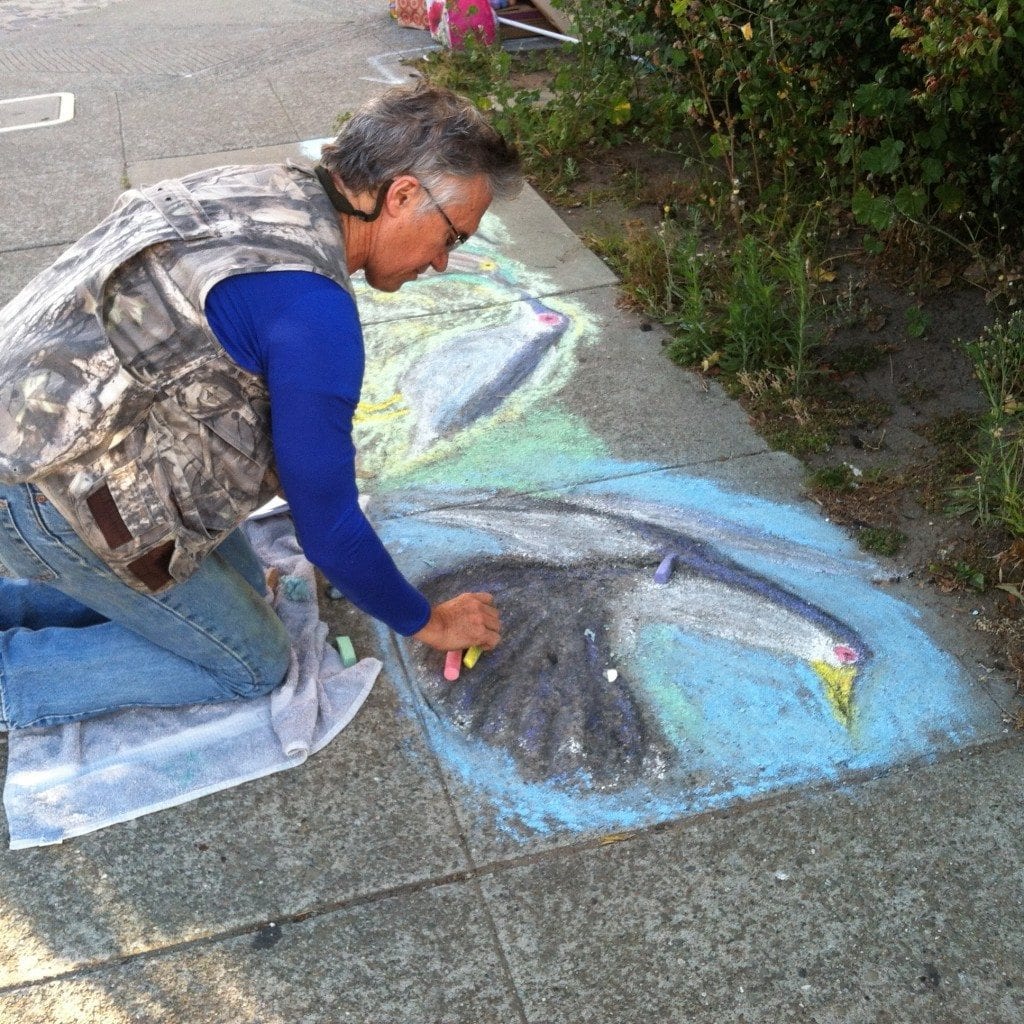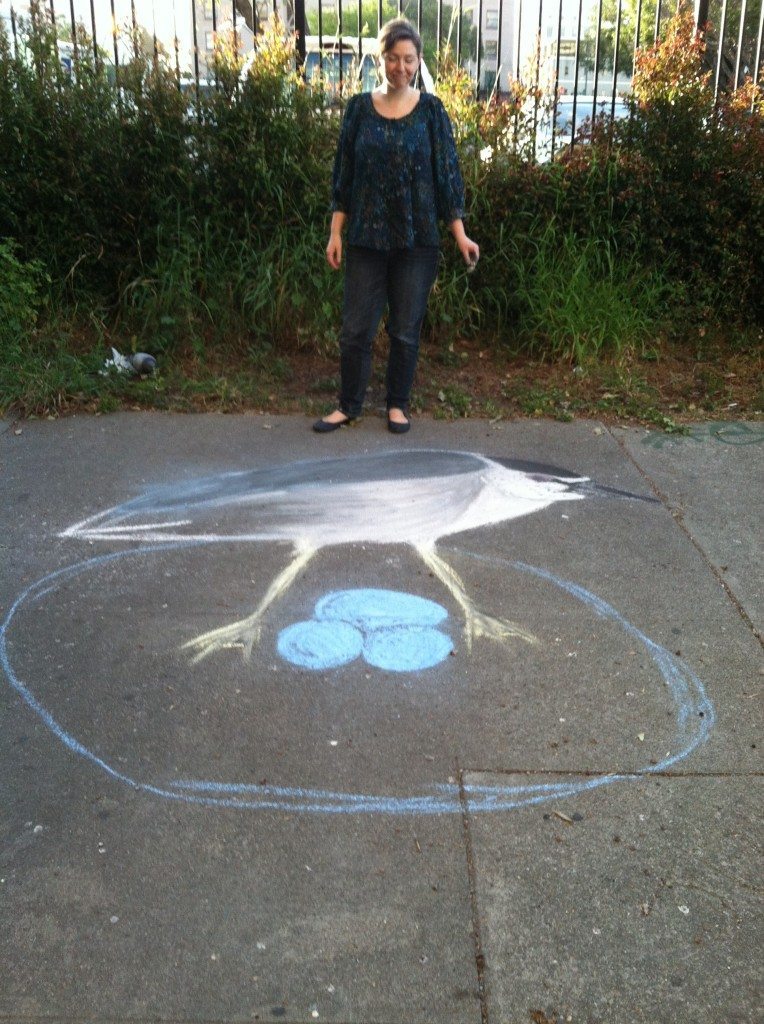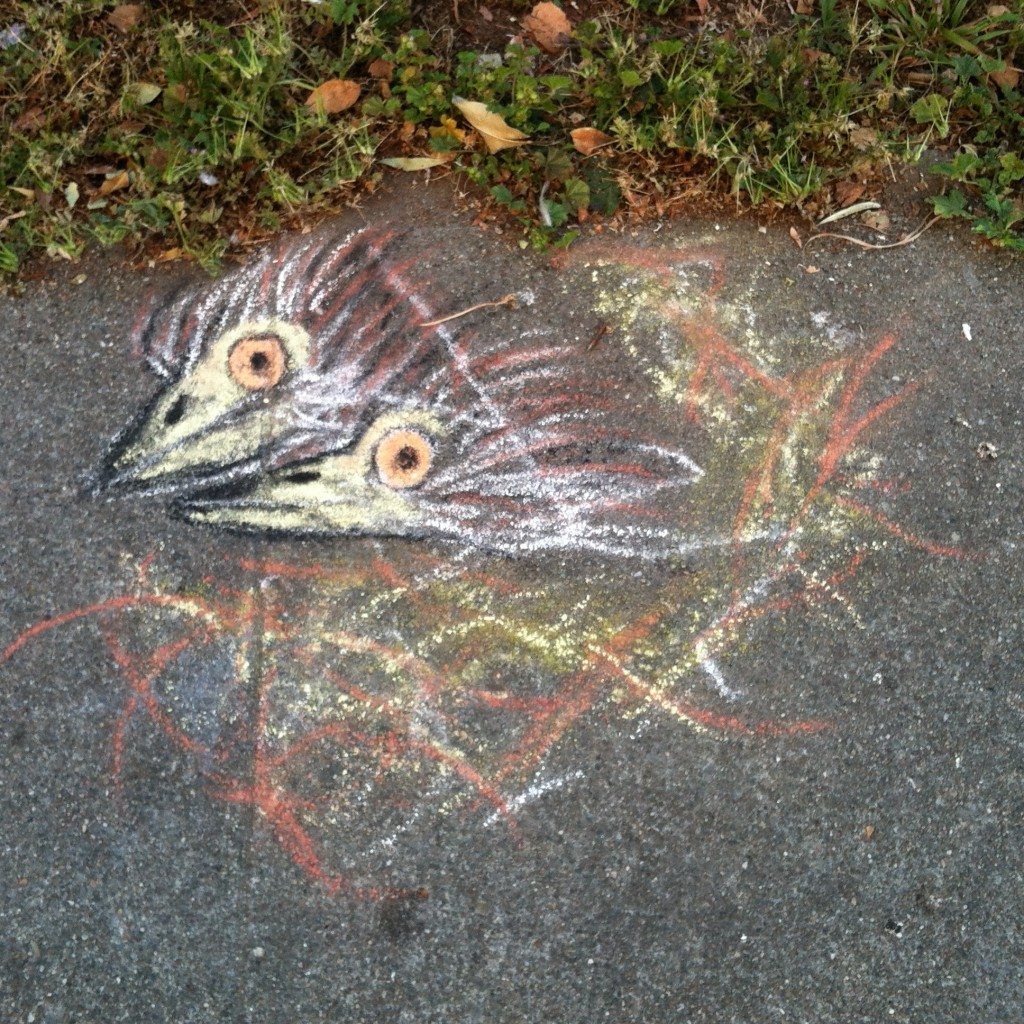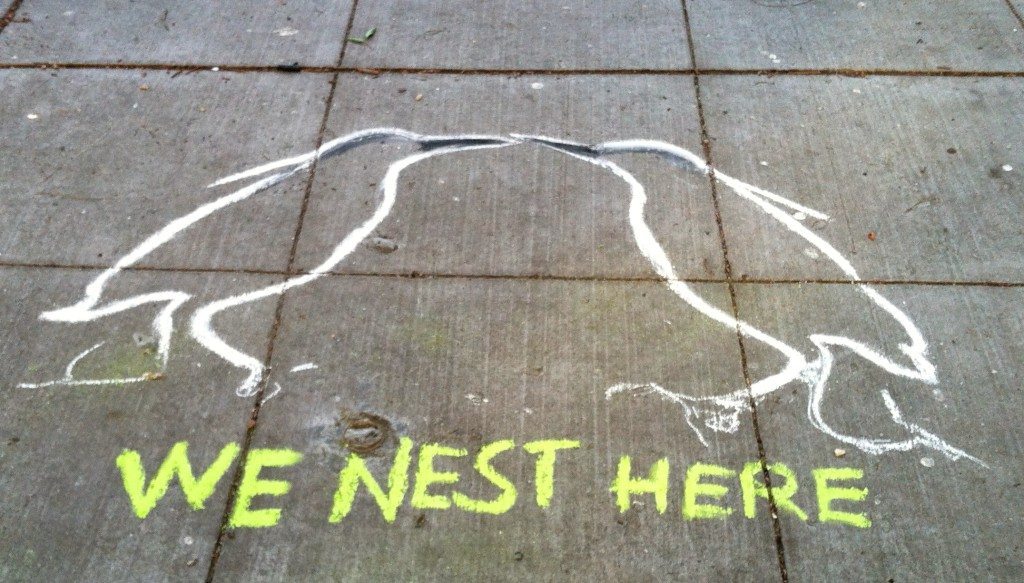Experiencing Condors during Birdathon
By Leslie Jacoby
Newsflash, April 20, 2015: Conservationists thought one of the few numbered wild California Condors had disappeared somewhere in the vast geographical landscape around Grand Canyon National Park. That was February 2015. Its number had been recorded, as is done with each and every known wild condor. Today, located near the small town of Cortez, Colorado, the rapscallion had been sighted and photographed by one of the seasonal park rangers, Franz Carver. The condor’s tag read “N8,” and he was in fact the missing two-year-old male. The short trail of events made the news, and I smiled upon hearing it.
* * * * *
Only two days prior to this newsflash, an excited Birdathon group from Golden Gate Bird Alliance stood on a dirt turnout next to a hairpin curve on Highway 1, south of Big Sur, admiring a couple of wild California Condors: Tag numbers 251 and 222.
They were a male and a female, sunning themselves on the rocky cliffs in the unusually warm spring morning. Intermittently, one or the other preened or fluffed a feather. We set up the birding scope and each of us took a turn viewing the rare birds through the high-power magnifying lens.
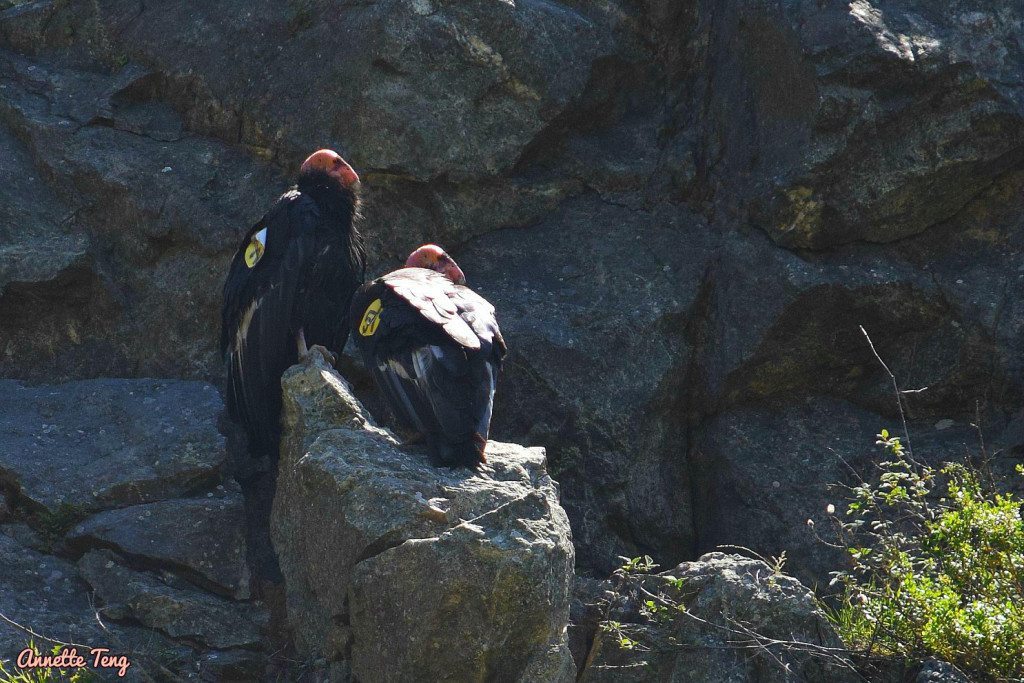 Male and female condors on the Birdathon trip / Photo by Annette Teng
Male and female condors on the Birdathon trip / Photo by Annette Teng
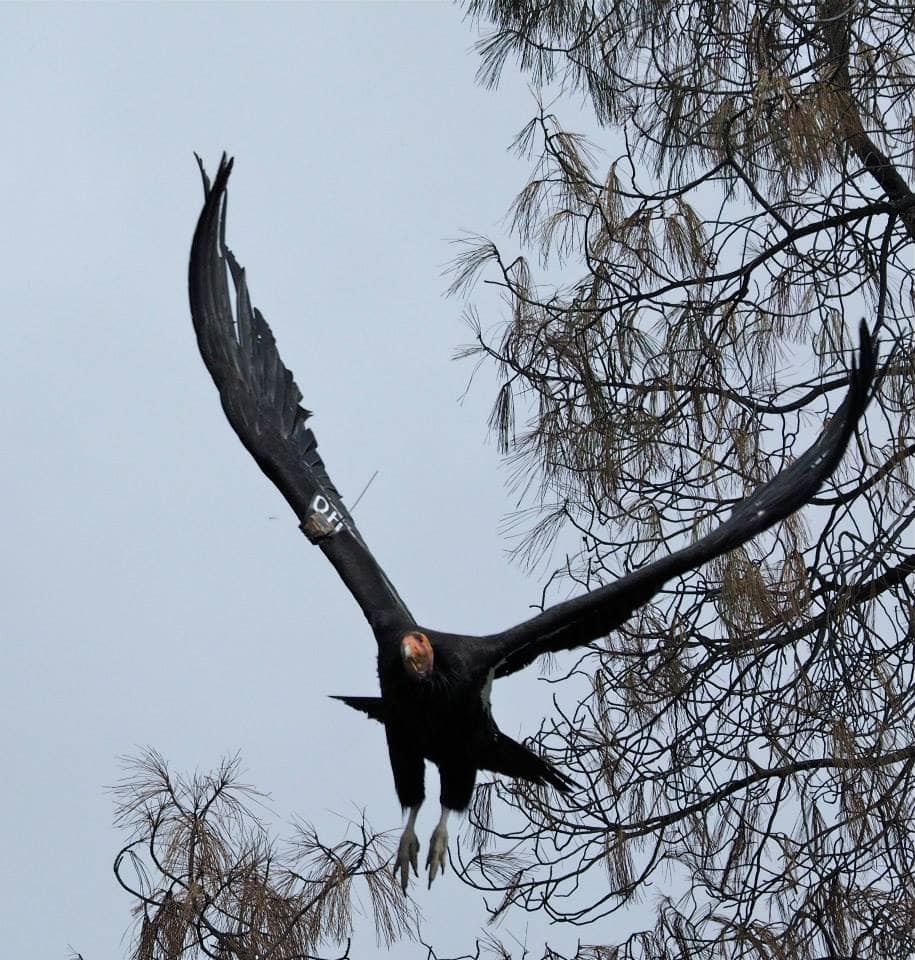 Condor in Pinnacles National Park / Photo by Phil Price
Condor in Pinnacles National Park / Photo by Phil Price
Andy Kortman, our young guide from Ventana Wildlife Society, happily filled us in on the backstory: Number 222 was living with her second mate, Number 251. Andy explained why, if condors mate for life, Number 222 would be willing to take up a new partner. It seems that her first mate had been found wounded on the side of a local road, his beak broken, which had caused a serious feeding problem. He was taken to the Oakland Zoo for medical care. When he was returned to Big Sur, alas, his “wife” had moved on to mate with another. During our visit, Number 222 and Number 251 guarded a single egg, which was due to hatch soon.
April was Birdathon month. It’s the time of year for looking up to the skies to fulfill our passion for sighting migrating geese, wayward raptors, and chirrups of local birds excited by new spring. I look forward to every springtime in northern California, both for the wonderful birding and for GGBA’s Birdathon.
I was fully on board this year and committed to Birdathon’s goals.…

